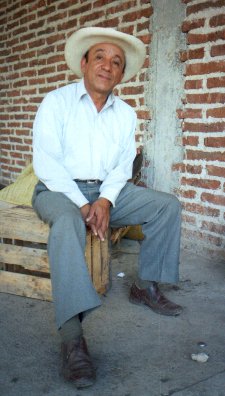 New Masters of the Land
New Masters of the Land New Masters of the Land
New Masters of the Land(left) Samuel Yepes, of San Antonio Guaracha, the principle neolatifundist entrepreneur in the ejidos around Guaracha from the late 1940s up to the early 1970s
At first, the exploitation of the newly individualized ejidatarios was an indirect one, a "formal subsumption" of the peasant production process by (merchant) capital in Marxist phraseology. Advances of seed and money to be repaid at the time of the harvest enabled merchant-usurers to deprive most of the ejidatarios of their entire surplus over and above family consumption needs, and, as time went by, create a situation of deepening indebtedness which laid the basis for a neolatifundist system of capitalist exploitation of the ejidos via land rental. From the late 1940s onwards, most commercial production in the Ciénega was carried out by capitalist entrepreneurs on rented land, with administrators drawn from the ranks of the ejidatarios supervising cultivation by gangs of day labourers. These would sometimes include the title holder of the plot, though many ejidatarios preferred to try to live on what they or their sons could earn through bracero migration to the United States rather than suffer further humiliation.
Dámaso Cárdenas himself at one point aspired to become the new appropriator of the peasant surplus, through a system of credits administered from the wheat mill that he built in Jiquilpan from the fruits of political power and class compromise. It was run by a network of agents in the ejidos under the supervision of the last administrator of the Guaracha hacienda. He was, however, forced to abandon this role after realizing his ambition to become state governor at the start of the 1950s, leaving the field clear to a group of less politically influential, self-made men whose main assets, beyond starting capital, were adeptness at the manipulation of the local idioms of patronage and peasant class culture.The principal neolatifundist in Guaracha was Samuel Yepes, from the neighbouring village of San Antonio, whose father had abandoned his mother when he emigrated to the United States in 1918. Don Samuel began his career as a money lender at a young age, and was unusually successful in converting debts into control over land.
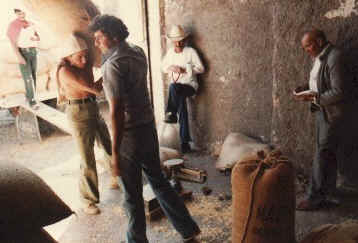 Pancho Romero, of Villamar, a smaller grain merchant who made loans to peasant farmers against the harvest.
Pancho Romero, of Villamar, a smaller grain merchant who made loans to peasant farmers against the harvest.
The local neolatifundists were ultimately merely cogs in a bigger machine, forced to take on the risks on direct control over production instead of enjoying the easier pickings of commercial intermediation by the weakness of the underlying peasant economy. The renewed growth of wage labour, both at home and in the United States, dealt a death blow to attempts by some peasant farmers to make up for their lack of capital by practising reciprocal labour exchanges in lieu of paying for non-family labour in cash. Use of family labour aside, money was increasingly to become the measure of all things as far as peasant farming was concerned, as the first tractors began to appear, followed, in the Seventies and under state sponsorship, by new agro-chemical inputs like herbicides which could do the job more cheaply than labourers wielding machetes. By this stage, only a minority of farmers still possessed horses or mules, so that those tasks which were not mechanized generally required hiring for cash. At no point did independent peasant production disappear entirely, however, since there were always some ejidatarios who invested migrant earnings in the land, or who were a little better off than their fellows by possessing some other source of livelihood. A few stubbornly stopped short of renting their land out by struggling on with the aid of children who were not yet migrating and keeping their debts under control. But the general tendency was for ejidatarios who retained their land rights to become increasingly dependent on U.S. migrant earnings. Those who left for the cities were more likely to sell their titles definitively, but up until the 1970s, land values remained so low that buying rights in an ejido was a possibility for most ordinary U.S. migrants, so that international, as distinct from rural-urban, migration perversely acted more to conserve the ejido system than to dissolve it.
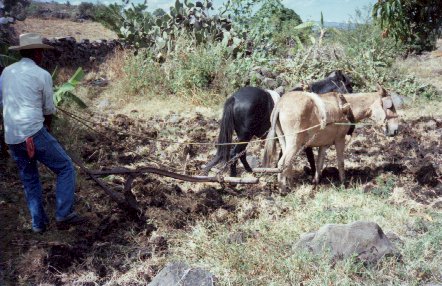
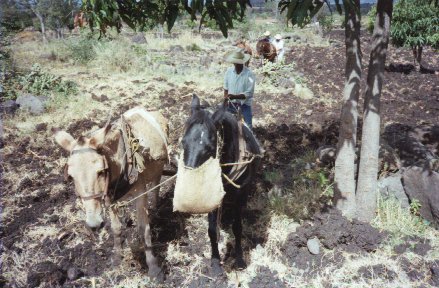
Plough cultivation using the traditional tronco of horses or mules.
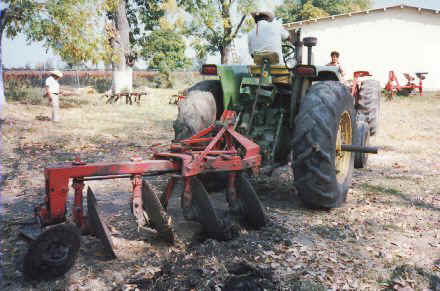
When the neolatifundists took over the land, use of tractors increased.
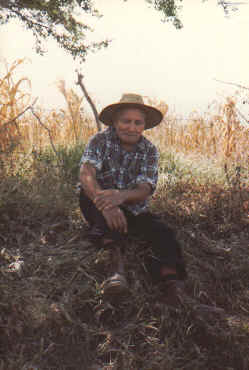
An elderly ejidatario who migrated many times to the United States as a bracero, renting his land to Samuel Yepes, but retained his rights in the ejido. In California, he met people from Oklahoma, remarking that this was the first time he had realized that there were poor people like himself in the United States.